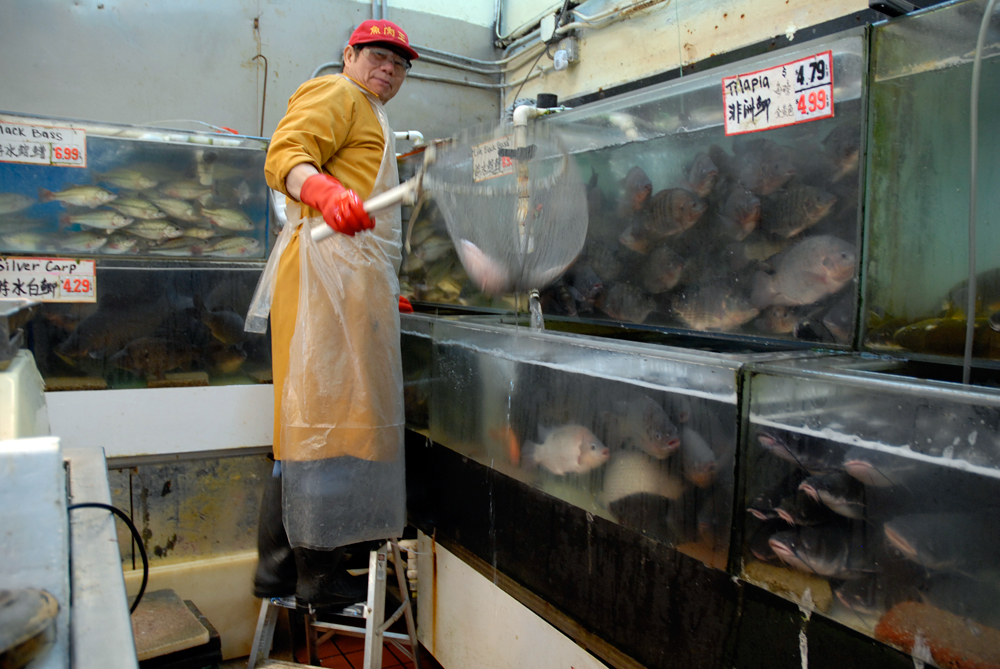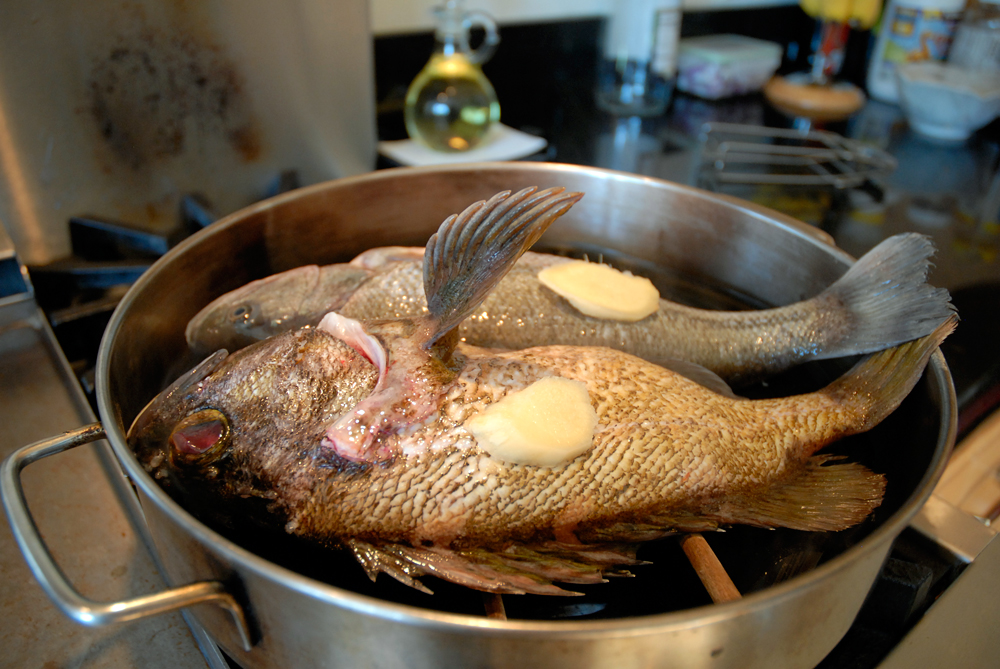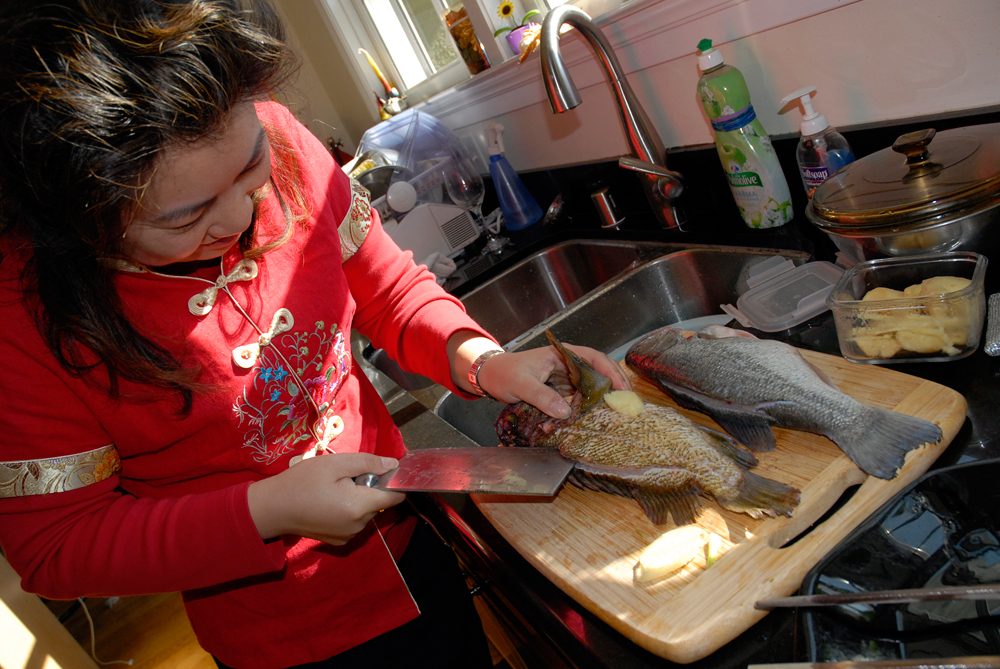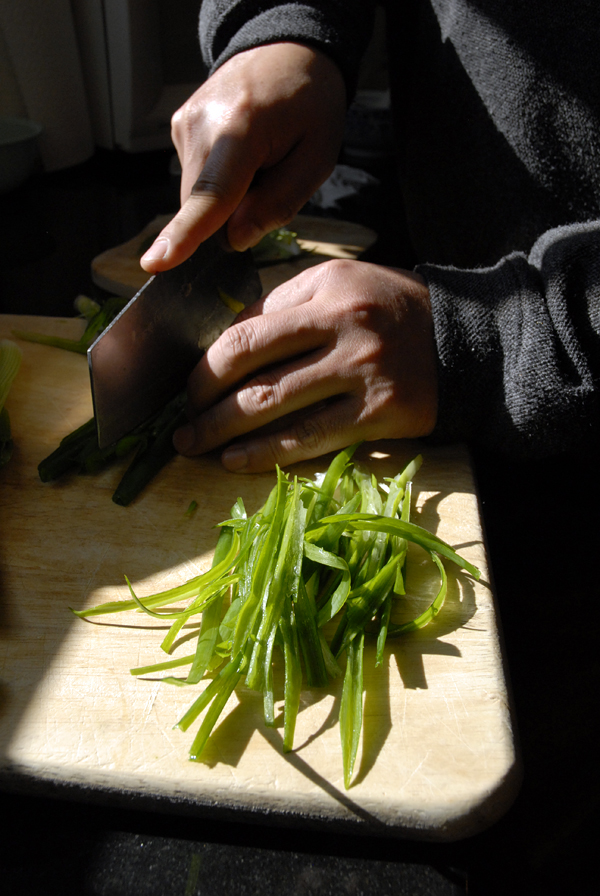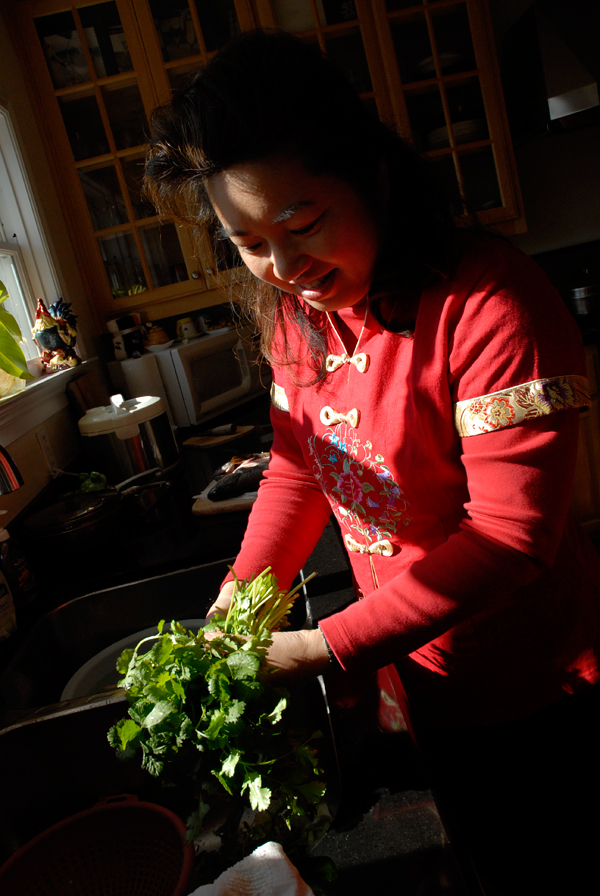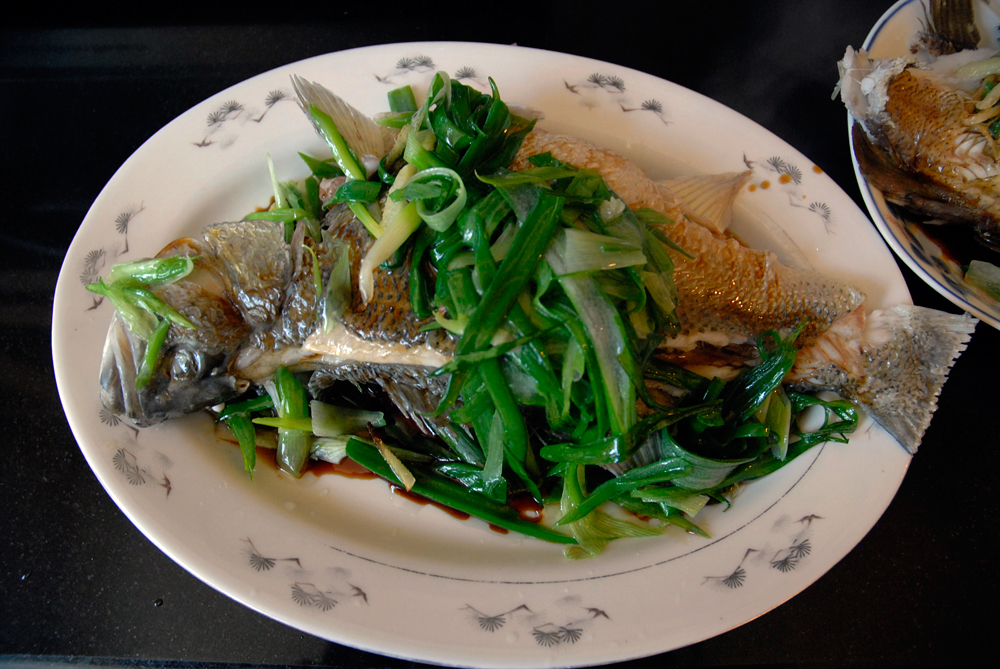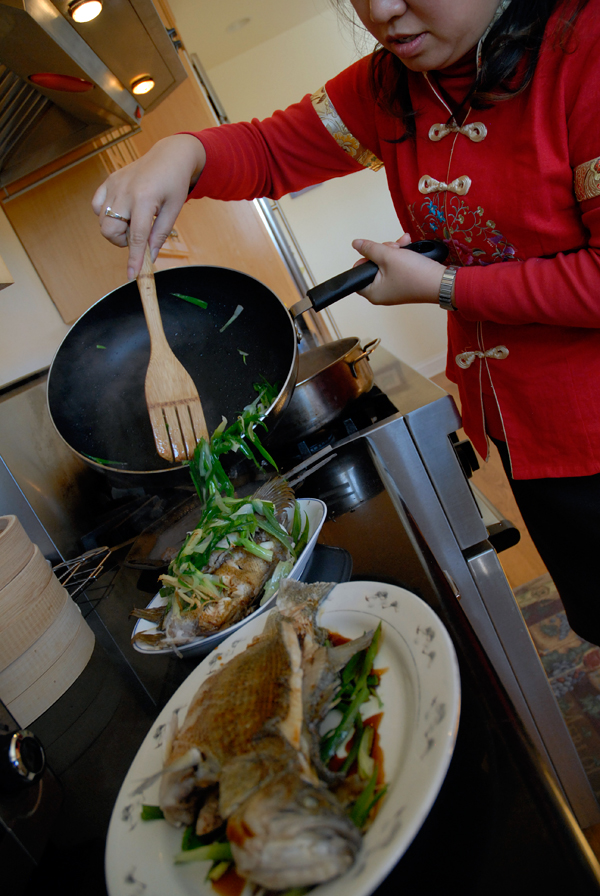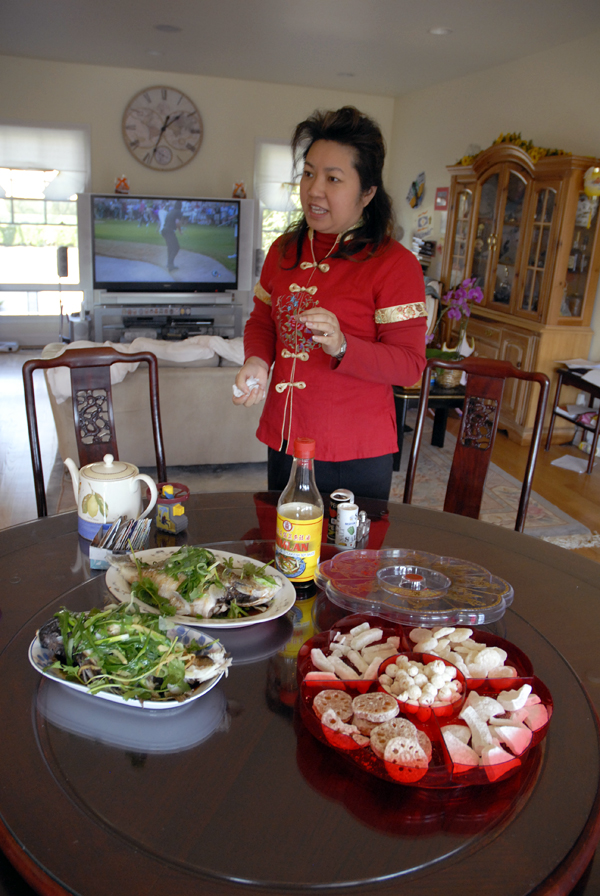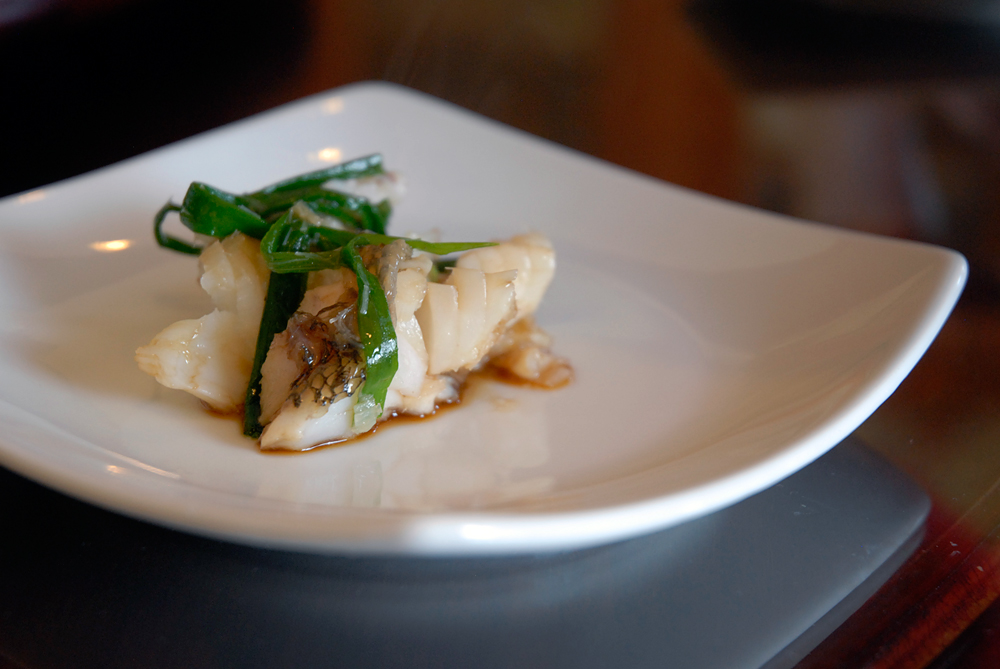I’m surrounded by a dozen huge tanks of handsome swimming fish, including red tilapia, black bass and silver carp at the E&F Market in Oakland Chinatown. My friend, Lisa Li, has graciously agreed to take me on an urban “fishing expedition” to buy a live fish that we will cook for lunch, in the Chinese tradition. Among the many choices of fresh and farmed varieties, she decides on a wild-caught rockfish and points the fishmonger to a tank labeled “gopher” fish. He deftly wields a hand-net and scoops up a lively, mottled brown fellow with spiky fins and bulging blue eyes. We see it wriggling for a moment before a discrete thwack on the other side of the counter dispatches it into a state ready to be cleaned and bagged. Lisa also chooses a farmed sea bass for us to compare the flavors.
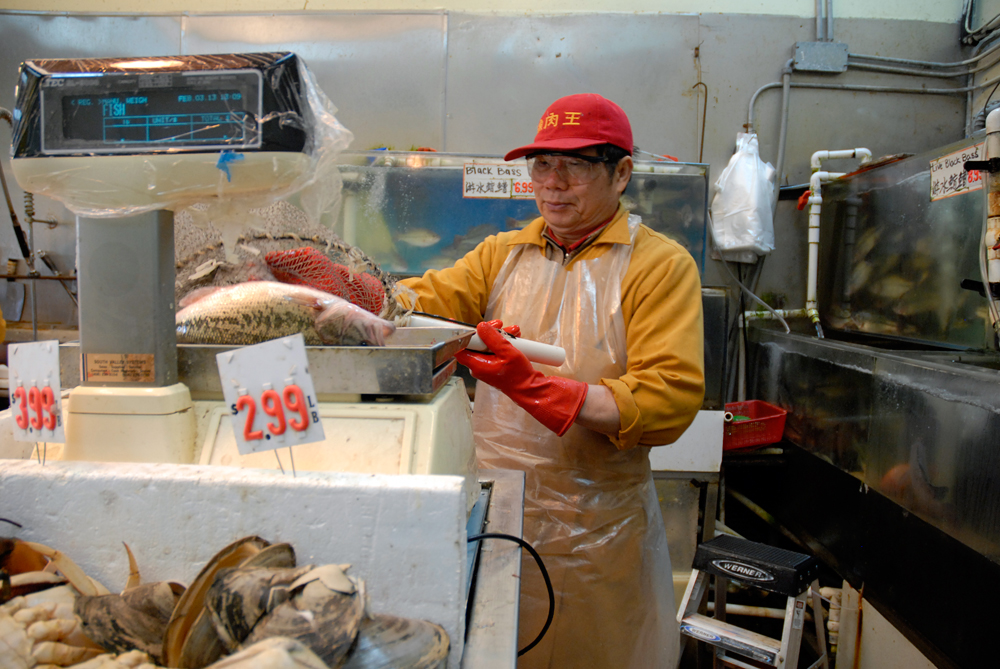
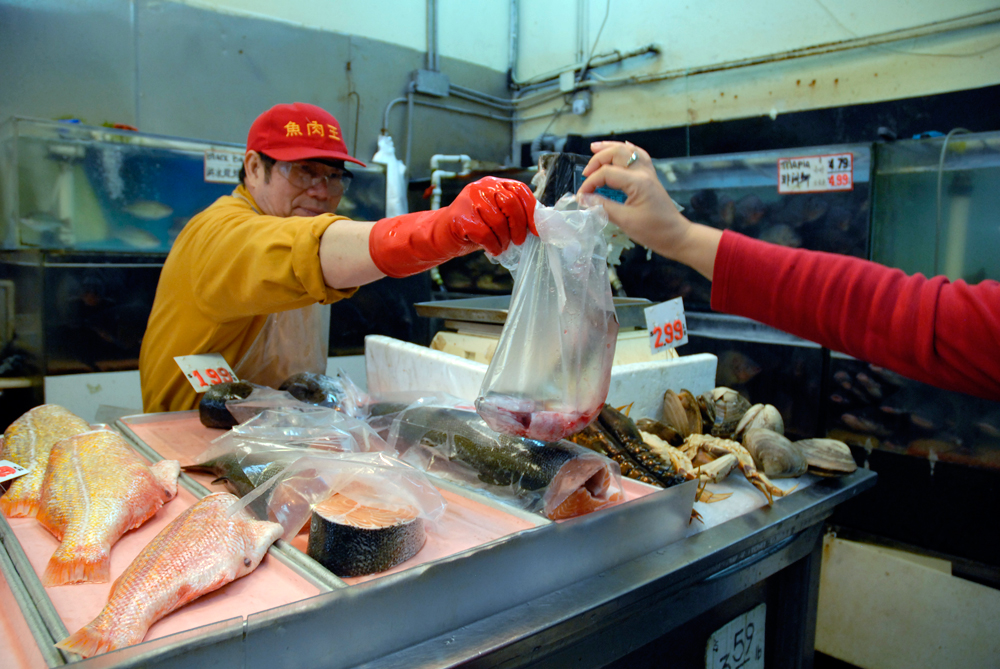
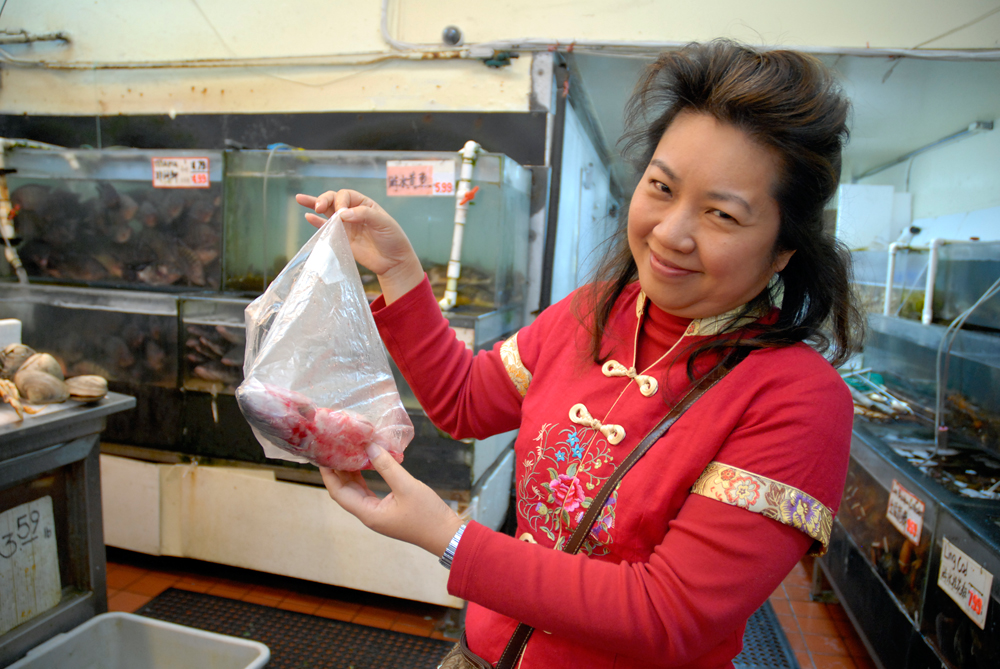
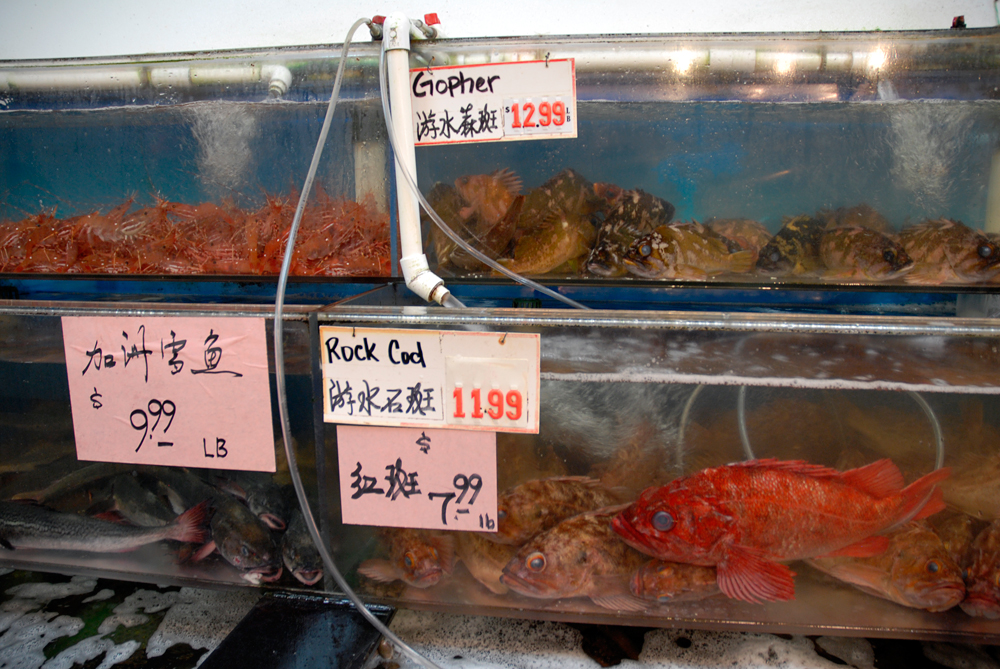
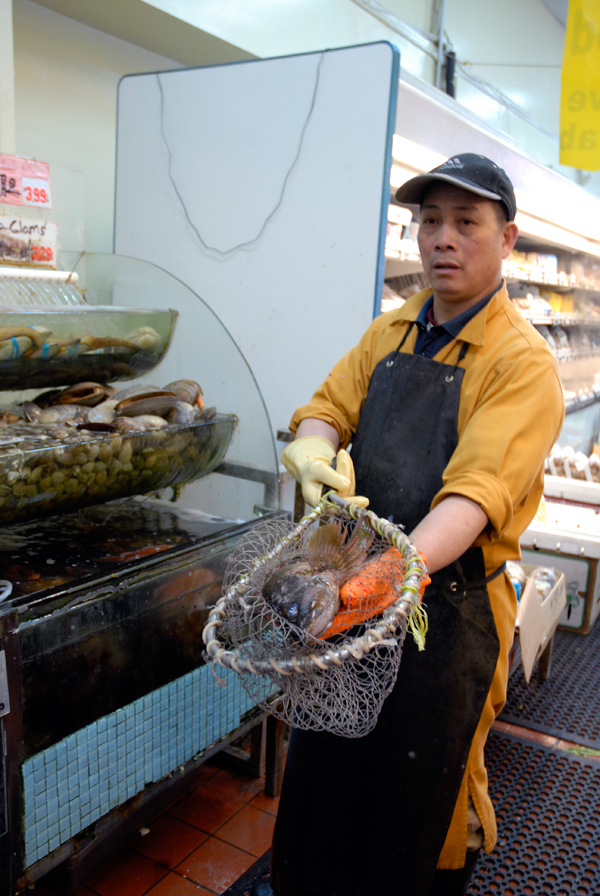
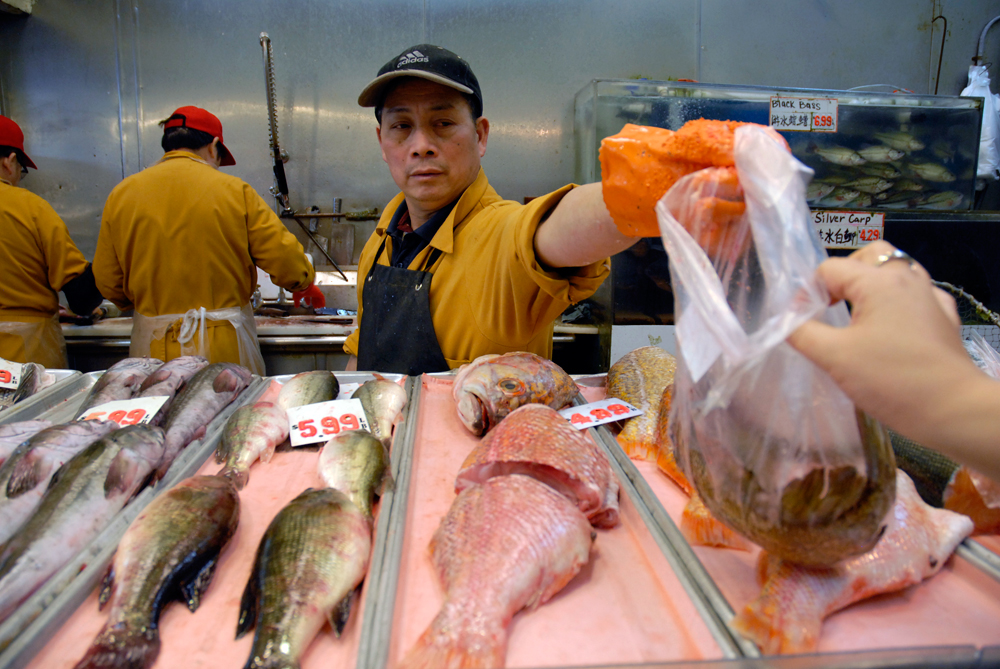
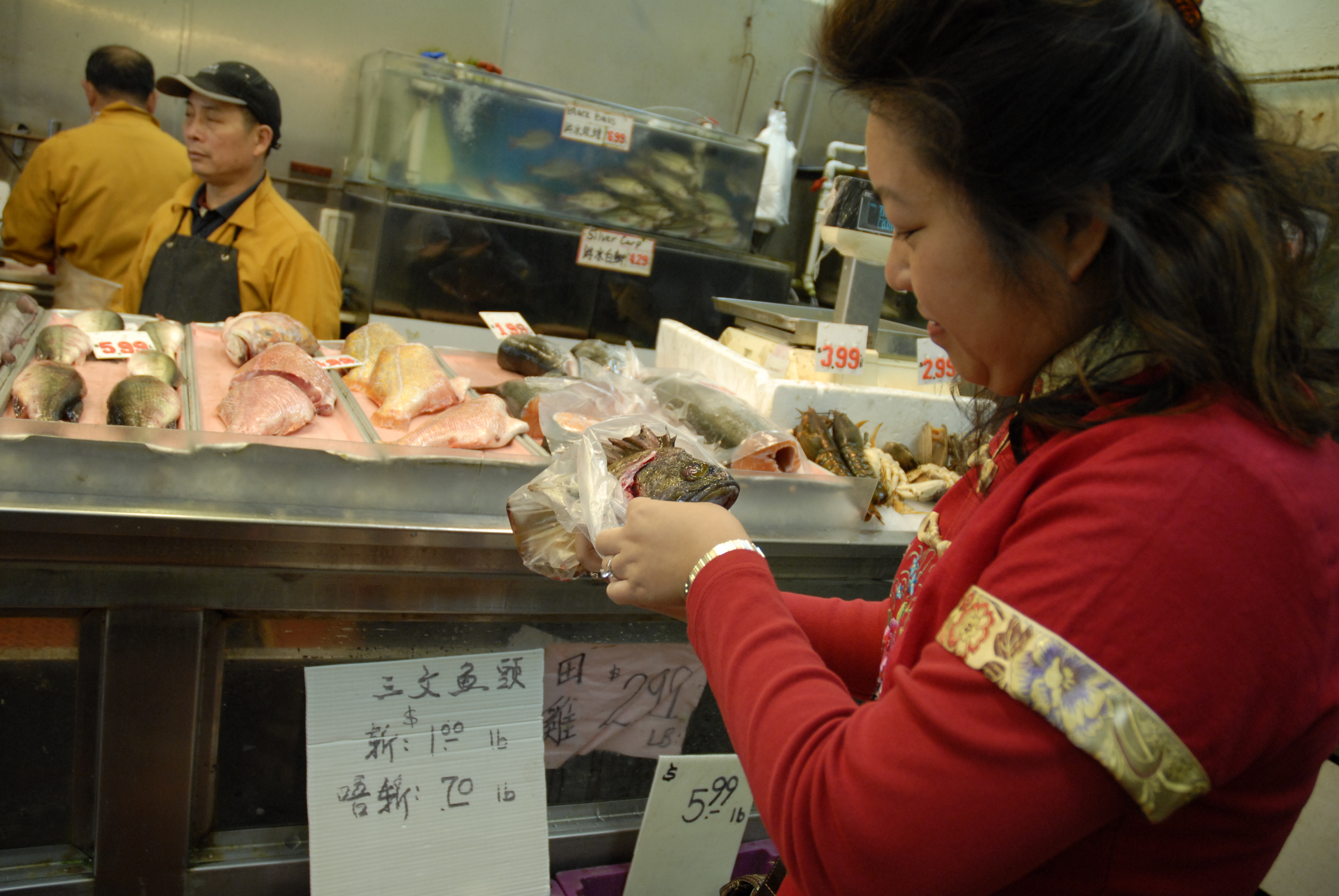
Lisa, who grew up in Guangzhou, China, is a world-traveler who enjoys the cuisines of many cultures and together we’ve shared Moroccan tagines and Spanish tapas. She is also happy to expand my knowledge of Chinese cooking and take me along on this shopping trip she makes weekly. “In Chinese culture,” she tells me, “we like to get our protein as close to live as possible.” What could be fresher than a fish that was swimming around less than an hour before you eat it? And for the upcoming Chinese New Year’s Eve feast, a whole fish is the traditional last course. The word for fish yu also signifies “abundance,” making simply dressed, steamed fish a symbolic and delicious way to end the meal.
Although Lisa frequents several Oakland Chinatown fish markets, she decides that this newish, spacious one would be best for me, since it has the biggest selection and its owners speak English.
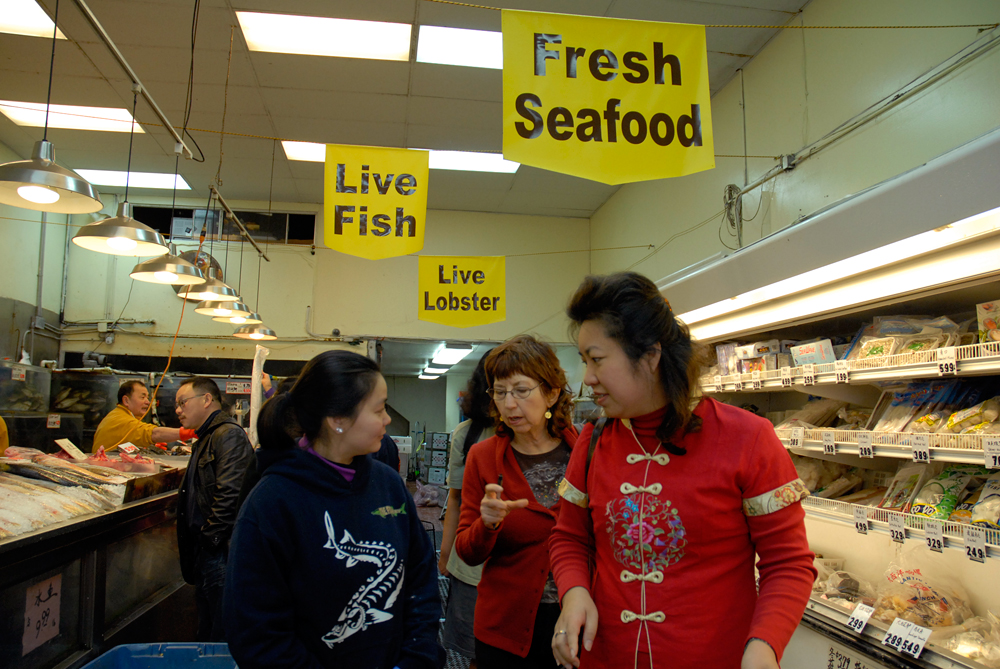
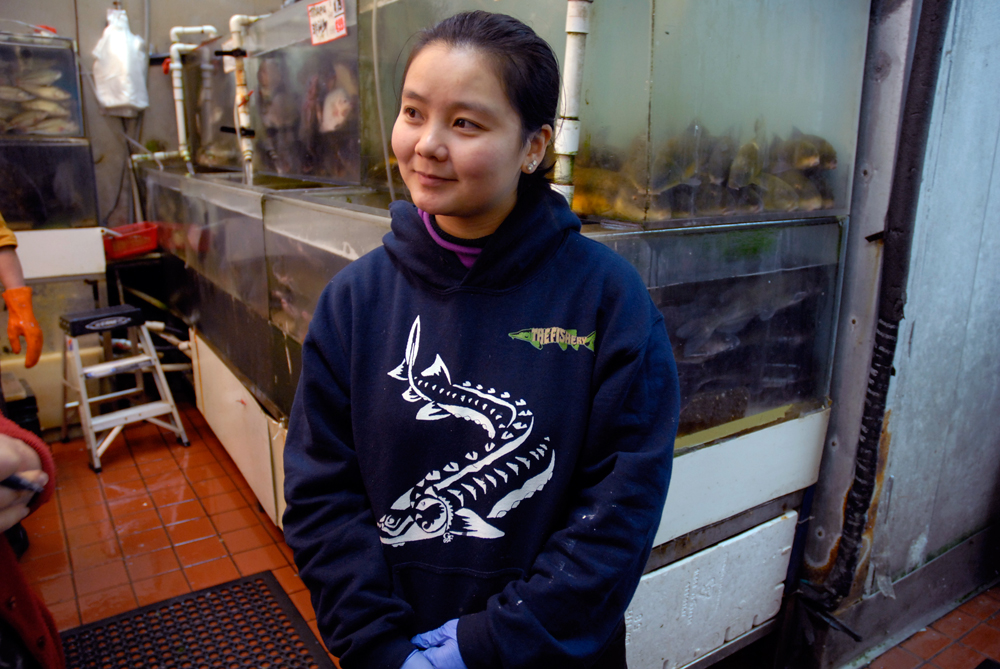
A petite woman in a fish-emblazoned sweatshirt greets us, adding that we are very lucky to live in California since we have so many local fish to choose from. The co-owner of E&F Market has an impossibly perfect name: Finnie Fung. She grew up with fish, helping her parents on weekends in their New Sang Chong Market a half block away. Finnie, age 31, and her husband bought this store, formerly called Hung Wan Market, from her parents and recently changed the name to “E&F” to reflect this new identity (as Eric and Finnie) and also to connect with the younger generation.
“Many Americans [who don’t speak Chinese] are frustrated shopping at the older markets in Chinatown. They often think the shopkeepers are being rude,” explains Finnie. “They aren’t being rude on purpose. It’s just that they don’t speak English well. Here we can answer shoppers’ questions about which fish to buy and how to cook them.”
Meanwhile the orange-gloved fishmongers have quickly scaled, cleaned and bagged our two fish. And as we pay, Lisa picks up some other ingredients we’ll need: fresh scallions, ginger and cilantro.
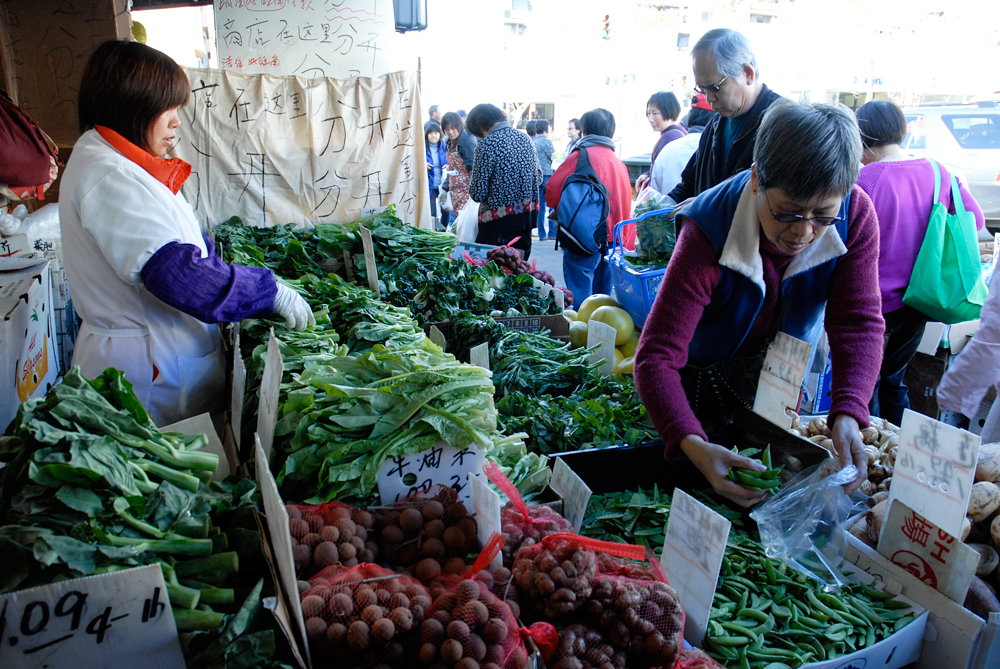
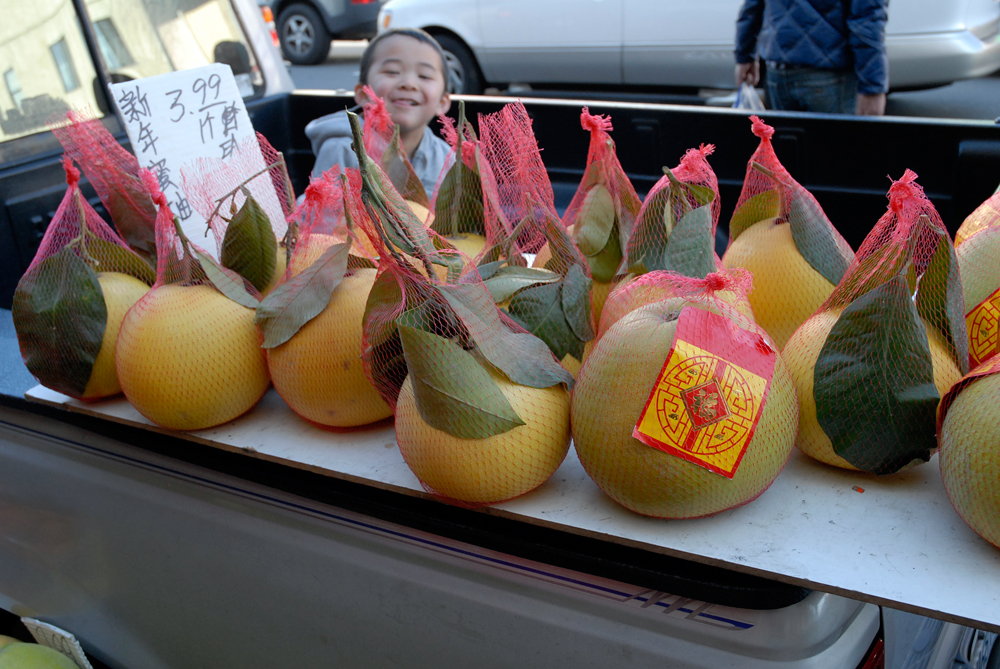
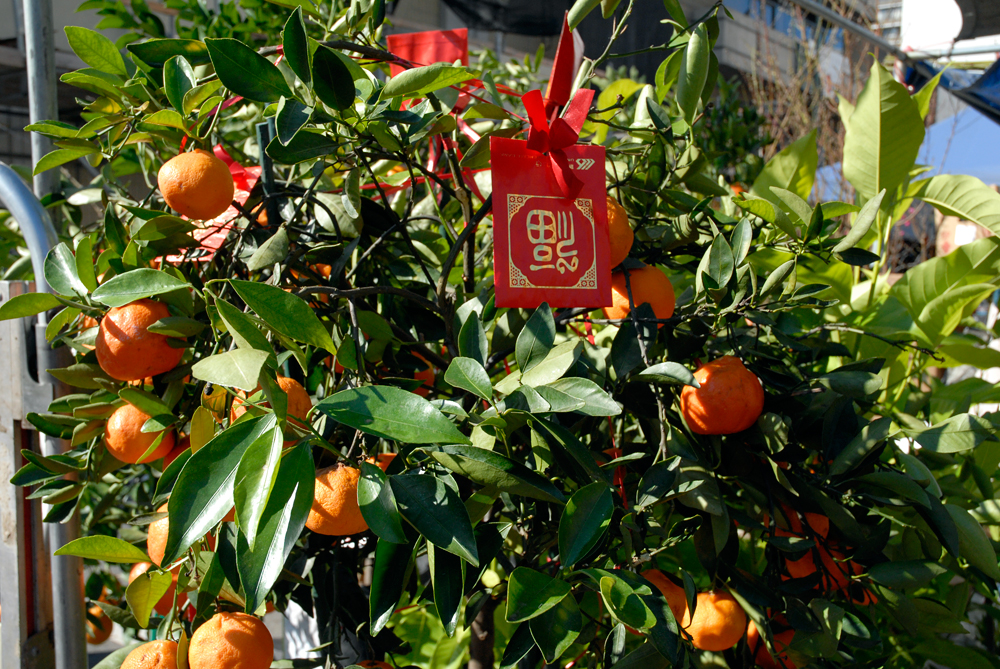
We chose the perfect day to stroll through Oakland Chinatown: the annual New Years Bazaar. As we walk back to the car, we thread our way through bustling streets, lined with piles of green-leafed tangerines, huge hanging pomelos, red and gold chrysanthemums and branches of plum blossoms (all symbolic of good fortune in the new year).
